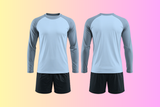In the modern world of E-commerce , offering product customization has become one of the best ways for brands to stand out from the competition and create personalized experiences for customers. However, despite its potential for growth, many brands remain hesitant to adopt this business model. Concerns about cost, complexity, quality control, and customer dissatisfaction often dominate decision-making.
In this post, we’ll explore the top 7 fears that brands commonly have when it comes to product customization, along with actionable solutions to overcome these challenges. By addressing these concerns, you can confidently implement a successful customization strategy that enhances customer satisfaction and boosts brand loyalty.
1. Fear of Increased Operational Costs
The Concern:
One of the primary fears brands have when considering product customization is the potential for increased operational costs. Customization typically involves additional production time, special equipment, and more labor-intensive processes, all of which can strain a company’s resources.
How to Address It:
While product customization does require an upfront investment, there are ways to manage and reduce costs:
- Start Small: Rather than offering unlimited customization options, begin with a limited selection of customizable features. For example, let customers choose from pre-designed patterns, colors, or text to keep things simple and manageable.
- Automate Processes: Implement software solutions that automate the design and production process. Tools like online design platforms and 3D printing technologies can help reduce manual labor and expedite production times, lowering costs in the long run.
- Scale Gradually: As demand for customization grows, scale your offerings incrementally. By carefully tracking demand, you can adjust your customization features to maintain profitability while meeting customer needs.
Key Tip:
Track the cost of customization closely to ensure that it remains profitable. If certain customization options consistently result in high costs, it might be worth reevaluating or refining those options.
2. Fear of Logistics and Delivery Challenges
The Concern:
Custom products often take longer to produce, leading to concerns about fulfillment and shipping delays. Customers who expect fast delivery may be frustrated by the longer wait times associated with custom orders.
How to Address It:
Effective logistics planning and clear communication can go a long way in addressing delivery challenges:
- Clear Communication: Be transparent about production and delivery timelines. Include estimated delivery dates for custom orders during the purchasing process so customers know what to expect.
- Streamlined Fulfillment: Work with specialized fulfillment partners who can efficiently handle custom products. Many third-party logistics (3PL) providers offer services tailored specifically for custom items, helping to ensure fast and reliable shipping.
- Offer Shipping Options: Consider providing different shipping options. For customers in a hurry, offer expedited shipping at an additional cost. This way, customers can choose whether to wait for standard delivery or pay for faster service.
Key Tip:
When offering customization, ensure that your website features real-time tracking capabilities for custom orders. This allows customers to stay updated on the status of their items and helps manage expectations.
3. Fear of Losing Brand Identity
The Concern:
There is a valid concern that offering too much customization will dilute a brand’s identity. Brands that are known for their distinct style or aesthetic may fear that custom products will stray too far from their original vision, leading to a loss of brand recognition.
How to Address It:
Customization doesn’t mean abandoning your brand identity; it’s about offering options that align with your core values:
- Stay on Brand: Offer customization options that complement your existing brand design. For example, if your brand is known for minimalist products, limit customization choices to subtle details like color or text. This maintains your aesthetic while still offering personalized options.
- Curated Customization: Instead of allowing customers to create completely unique products from scratch, offer a curated selection of customizable options that fall within a predefined set of guidelines. This ensures that customized products still reflect your brand’s overall style.
- Brand Guidelines: Establish clear brand guidelines for customization. This includes specifying color palettes, fonts, and patterns that align with your brand’s identity, ensuring that customized products remain consistent with your overall vision.
Key Tip:
Use a brand consultant or creative team to develop a customization strategy that’s in line with your brand’s DNA. This can help ensure that even the most personalized products still feel connected to your brand’s identity.
4. Fear of Overcomplicating the Customer Experience
The Concern:
Offering a wide variety of customization options can overwhelm customers, leading to confusion and decision fatigue. Brands may worry that the complexity of the process will turn customers off rather than attract them.
How to Address It:
The key to successful product customization is simplicity:
- Limit Options: Don’t overwhelm customers with too many choices. Offer a curated selection of customizable options, such as color, size, or engraving, that are easy to understand and select.
- Guided Customization Process: Use user-friendly interfaces, like design wizards or preview tools, to help customers navigate the customization process. Providing a step-by-step guide ensures that customers don’t feel lost or frustrated.
- Offer Templates: Allow customers to choose from pre-designed templates, making it easier for them to personalize without starting from scratch. This helps streamline the process and gives customers a sense of ownership over the final product without overcomplicating things.
Key Tip:
If possible, offer a live preview of the product before purchase. This helps customers visualize the final outcome and makes it easier for them to make decisions.
5. Fear of Quality Control Issues
The Concern:
Quality control is a significant concern when it comes to customization. Since custom products often involve variations in production, there is a risk of inconsistencies or defects that may not align with a brand’s high-quality standards.
How to Address It:
Consistency and quality assurance are essential to successful product customization:
- Set Quality Standards: Work closely with manufacturers to develop strict quality control processes for custom products. Regularly review the production process to ensure that each item meets the brand’s quality standards.
- Use Technology: Implement automated quality control tools, such as sensors or 3D scanners, to monitor the production process and detect any defects early on. This reduces the likelihood of receiving subpar customized products.
- Provide Guarantees: Offer a satisfaction guarantee or return policy for custom products. This builds customer trust and assures them that your brand stands behind the quality of its custom offerings.
Key Tip:
Develop a quality checklist for your customized products. This can be used at different stages of production to ensure that every product meets the standards before it reaches the customer.
6. Fear of Increased Returns and Refunds
The Concern:
With customization comes the possibility of increased returns or refunds. Customers may be unhappy with the final product if it doesn’t meet their expectations or if they misunderstood the customization options.
How to Address It:
Clear communication and a flexible return policy can help mitigate this concern:
- Educate Customers: Provide detailed product descriptions, size guides, and examples of custom products. The more informed customers are before making a purchase, the less likely they are to be dissatisfied.
- Offer a Preview Feature: Allow customers to preview their customized product before they finalize their purchase. This reduces the likelihood of miscommunication or disappointment after the fact.
- Flexible Return Policies: Have a clear and reasonable return policy in place for customized products. Consider offering exchanges or store credit instead of full refunds if the product doesn’t meet the customer’s expectations.
Key Tip:
Include a “help” or FAQ section on your website that explains the customization process, potential challenges, and how to avoid common mistakes.
7. Fear of Low Demand for Customization
The Concern:
Brands may worry that the investment in offering customization will not result in sufficient demand. They may fear that the market for personalized products is too niche to justify the effort.
How to Address It:
The best way to gauge demand is by starting small and testing the waters:
- Conduct Market Research: Run surveys or polls to ask customers if they would be interested in customized products. Collect feedback to understand what customization options would appeal to your audience.
- Launch Limited Editions: Start by offering limited-time customization options or seasonal products to create a sense of exclusivity and test demand before rolling out more extensive options.
- Leverage Data: Track engagement and sales data closely to evaluate how well customization is performing. If certain options are popular, expand on them; if not, refine or discontinue them.
Key Tip:
Consider launching customization as part of a loyalty program, offering exclusive products to repeat customers. This can create a sense of exclusivity and boost demand from your most loyal customers.
Conclusion
Product customization offers brands a unique opportunity to differentiate themselves in a crowded marketplace and foster deeper connections with customers. While concerns about cost, quality, and logistics are understandable, they can all be addressed with careful planning and the right strategies. By starting small, optimizing processes, and maintaining clear communication with customers, brands can successfully implement a customization strategy that drives growth, enhances customer satisfaction, and strengthens brand loyalty.




